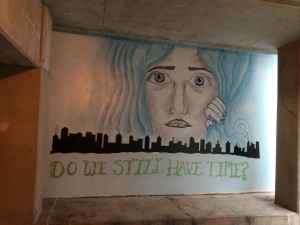I attended the Pet-A-Puppy event, where I got to play and pet puppies and dogs who were also service dogs. Of course, how could I resist an event with puppies?
It had been a rough day, and being able to hug those furry little angels was such a great stress reliever. I don’t know how or why, but there really is something so therapeutic about dogs and their touch. I understand why they are used in therapy. The dogs, to my surprise, were completely calm around the storm of people that walked into the room that day. I found out that service dogs have to be massaged and constantly touched by humans in the early phase of their lives in order to accustom them to being around humans. I found it incredible how well behaved these dogs were – so intelligent! While getting to play with these adorable creatures, I also got to understand more about the process of training dogs for guidance. I learned that it takes years to prepare a dog for providing guidance to humans. Also, the costs of training, feeding, medical costs total to about $30,000 per dog.
I found this astonishing. I usually see service dogs walking around with their owners and I do not think anything of it, much less appreciate or contemplate the amount of time and effort both on behalf of the dogs and their trainers. The dogs who make the cut to be service dogs have to meet certain standards and criteria, and they work hard to do so. I now have a new found respect for these dogs, being them is not easy. They have to ignore their own animal instincts and follow what they were trained to do in sometimes very stressful situations. The dogs that do not meet the criteria are adopted into loving homes, so that definitely helped me comforted for the dogs that could not. Overall this service dog agency has had 60,000 dogs go through their program. It is truly amazing, the work that is put forth for people to have service dogs.

